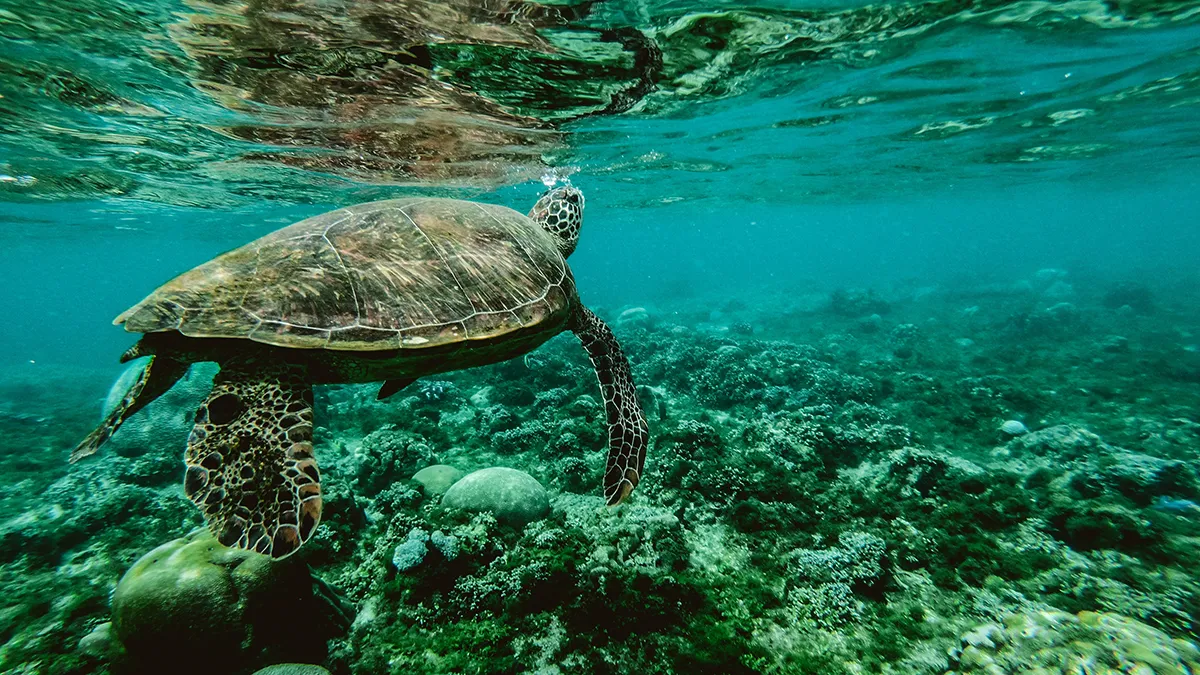An ABC piece about the death of a platypus in suburban Hobart shrieked that it was a sign of the species’ imminent threat. While it is indeed shocking and tragic that the animal died because of a loop of twine embedded in its fur, it might also be pointed out that the presence of platypus right in the middle of one of Australia’s capital cities hints at something else.
As Bjorn Lomborg has pointed out, cities are not, as we might imagine, antithetical to wild animals. Indeed, some wild animals thrive in human spaces.
One outcome of the platypus’ death was the founding of the Hobart Rivulet Platypus project, dedicated to the conservation of this remarkable platypus population in the middle of a major city.
This project is just one of millions of conservation efforts around the globe which are paying dividends for wild species.
New research published in the Proceedings of the National Academies of Sciences demonstrates the effectiveness of restoring seabird populations around the world for the first time. The study is a global synthesis of all reported seabird translocation and social attraction restoration efforts, which spans nearly 70 years and over 850 efforts across 36 countries, targeting 138 seabird species–roughly one-third of all seabirds worldwide […]
Seabirds are one of the most threatened bird groups on the planet with approximately 30% of species at enhanced risk of extinction, primarily due to threats from invasive predators at breeding sites, habitat loss and harmful fishing practices […]
The authors found that terns, gulls and auks are among the seabird groups seeing the most success, as these groups are among the most commonly restored. The most highly threatened seabird group—petrels, shearwaters and albatrosses—have also been common targets for active restoration, typically using social attraction or a combination of social attraction and translocation, both of which have also had high success rates.
Nature
One of the great fallacies of environmental doom-sayers is that economic progress is bad for conservation. In fact, the opposite is more true: wealthy countries can afford to dedicate money and effort into conserving their environments. But even some of the poorest countries in the world are seeing positive outcomes for wild animals.
Bangladesh has recorded the highest number of olive ridley turtle eggs laid on the country’s beaches this nesting season, thanks to extensive conservation actions.
A survey by the NGO Nature Conservation Management (NACOM) found 7,528 eggs at 58 spots on three different islands — Pachar, Shilkali and Shahpari — off the coastal district of Cox’s Bazar. That’s a 30% increase from the 5,763 eggs found in 54 spots in 2022, which in turn was a 22% increase from the 4,713 eggs recorded in 2021 […]
The sharp increase in recent years in olive ridley eggs being recorded on Bangladesh’s beaches is due to various comprehensive conservation initiatives being undertaken by the government, NGOs and local communities, including volunteer work, said Shafique Rahman, deputy project director of NACOM.
Mongabay
War is often as devastating for the environment as it is for human beings. Peace brings dividends for all.
After an epic 36-hour journey, the first native giraffes to be returned to an Angolan national park arrived from Namibia this week, in what many hope to be the first of multiple translocations to return the animals to their historical homeland.
The giraffes, seven males and seven females, travelled more than 800 miles (1,300km) from a private game farm near Otjiwarongo in the Otjozondjupa region of central Namibia to Iona national park in the south-west corner of Angola.
The new arrivals are the first Angolan giraffes (Giraffa giraffa angolensis) to be brought back to the country’s national parks in an effort to restore Angola’s wildlife, which was decimated during decades of conflict. The giraffes were thought to have been extinct since the 1990s.
The Guardian
That the animals were preserved on a private game farm also shows that the much-maligned hunters are not necessarily the enemy of conservation, contradictory as that may seem. While unregulated hunting and poaching are indeed devastating for wild animals, properly managed hunting groups often pour massive efforts into conservation. In Victoria, Australia, for instance, where duck hunting has been a battleground for decades, hunting clubs are responsible for a great many wetlands restoration projects.
A person may or may not like or participate in hunting, but the fact is that responsible hunters are well aware that conservation is vital to being able to enjoy their pursuit into the future.
Meanwhile, conservation efforts around the world are paying off.
Beavers are set to return to a wetland for the first time in 400 years, conservationists said.
The “charismatic” dam-builders will be reintroduced to the Nene Wetlands nature reserve, near Rushden in Northamptonshire.
The Wildlife Trust said it had secured a licence from Natural England to release the native animals next winter [..]
It would be the first time in four centuries that the animals would be seen in the Nene Valley and the first release on to Crown Estate land, the Wildlife Trust said.
The return of beavers to the area will likely have dividends beyond the expansion of their own species.
Beavers only eat plants – not just trees but brambles and other plants too. They are big fans of Himalayan balsam – an invasive non-native species that can spread easily and become problematic for our native wildflowers
They do not kill or destroy trees, they coppice them – these grow back and provide more spaces for wildlife
They are unlikely to build dams in the area as beavers usually build dams in rivers to create lagoons in which they can better protect themselves from predators
BBC
And species thought to be extinct can sometimes make remarkable reappearances. Including a remarkable, small, lizard with no ear opening or functional ear drum.
A tiny earless dragon feared to be extinct in the wild has been sighted for the first time in more than 50 years – at a location that is being kept secret to help preservation efforts […]
The last confirmed sighting of the dragon was in the Geelong area in 1969 […]
The Victorian and federal governments will invest $188,000 in a trial of detection dogs to sniff out more populations of the dragon.
The Guardian
As Lomborg wrote, in his eye-opening magnum opus, The Skeptical Environmentalist, the state of the environment may not be perfect, but it’s much better than we’re told by media and activists. And, as these impressive conservation efforts show, it’s most often getting better, not worse.









